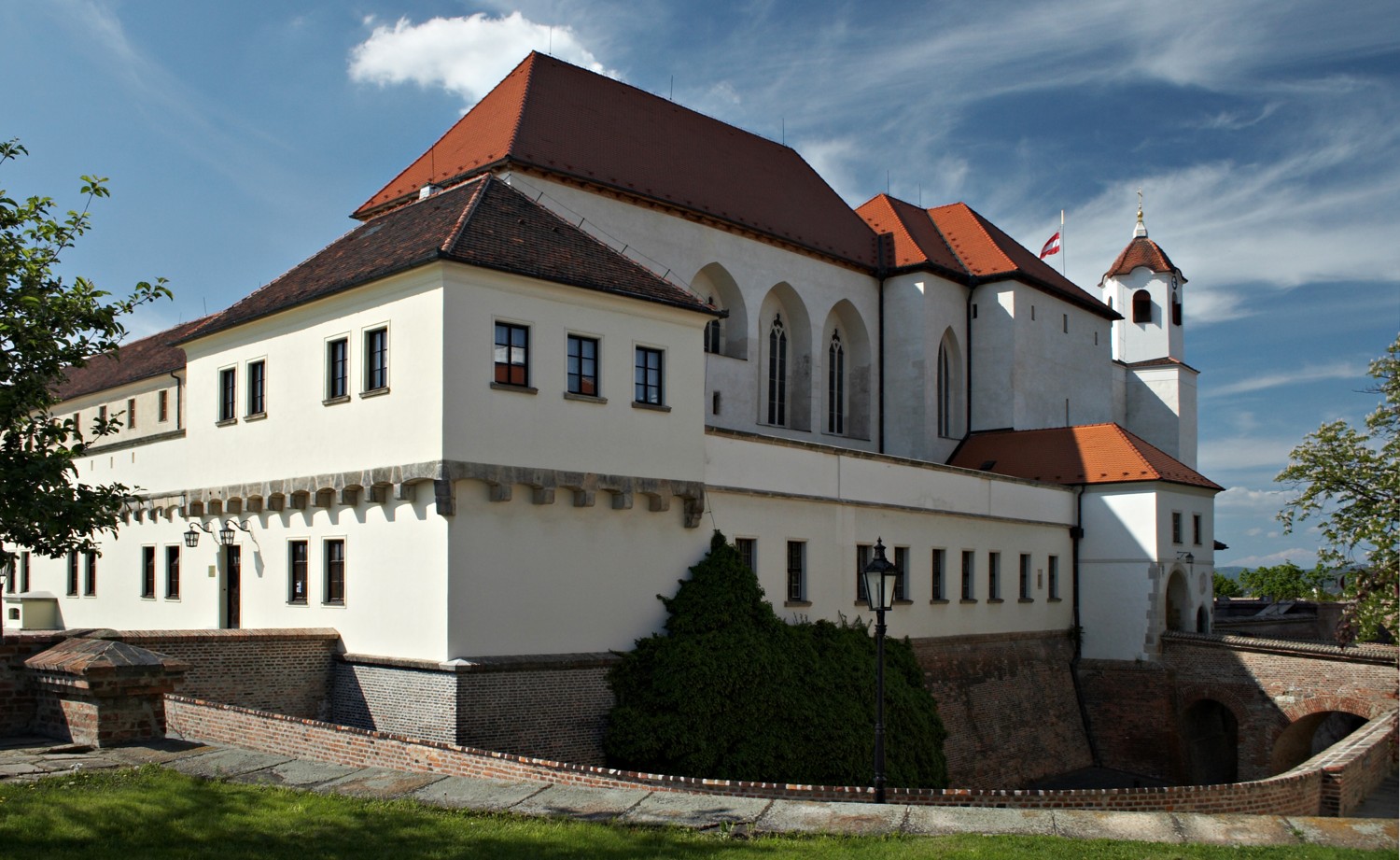 City of Brno
City of Brno
Dominikánské náměstí 1, Brno
Czech Republic
tel.: +420 542 172 201
e-mail: kp@brno.cz
www.brno.cz

Primátor města Brna
Mayor of the City of Brno
There is no doubt – and it is agreed both by historians and history lovers – that Moravian medieval history is an integral part of Czech history. That is why Moravia and Brno cannot be overlooked in the year of celebrations of the 700th anniversary of the birth of the Czech king and Holy Roman Emperor Charles IV of Luxembourg.
The Luxembourgs also created a piece of Brno’s history between 1311, when Charles‘ father John of Luxembourg was accepted as Moravian Margrave, and 1423 when Charles‘ son King Sigismund handed over the rule of Moravia to Austrian Duke Albrecht V; the city has remained inhabited by memories of that era and landmarks reminding us of it.
As a Brno citizen and fan of the city who now has the honour to participate in its administration, I am pleased to see that Brno since time immemorial has played an important role in the Central European area and that it can also boast an exhibition organized in honour of Charles IV. I am
a lay lover of history, so I can look at it through the enchanted eye of a romantic rather than the stern eye of a historian who claims that Charles never really had any affection for Brno and that it mostly interested him as a source of finance. That‘s why I like to compose a mosaic of Luxembourg-era Brno from fragments of events and interesting stories.
There are funny stories saying that the conceited King John granted Charles the title of Moravian Margrave in 1334 also in order not to be called „the younger king“ alongside the „the elder king“. And that he expelled Charles‘s wife Blanche of Valois from Prague to Brno not only because of the disputes that he had with his son, but also so as not to have her compete with his new wife. Let us hope that the young Margravine never suffered at Špilberk castle, because during the Luxembourg period it used to be full of life and joyful pleasures. Brno at that time even entered into a verse of Gillauma de Machaut, one of the greatest composers and poets of the 14th century, who worked in the service of King John.
As Brno citizens we can also be filled with pride at the fact that during the rule of Charles‘ brother and nephew – Margraves John Henry and Jobst – Brno and Moravia came to flourish. And also that Jobst, a strong and daring player in European politics, was also elected King of Rome. His courage is symbolized today by the boldly conceived modern equestrian statue by the sculptor Jaroslav Róna, placed in front of the Church of St. Thomas on Moravské náměstí, which alongside the Augustinian Monastery was founded by John Henry and where the Moravian Luxembourgs are buried.
In short – Brno has a rich history inscribed on its face, and I believe that the exhibition and this publication will allow visitors and readers to discover with pleasure, interest and satisfaction the traces of the imposing and interesting life of our city in the Luxembourg era.
Charles IV and Brno
Prof. Mgr. Libor Jan, Ph.D.
Masaryk University
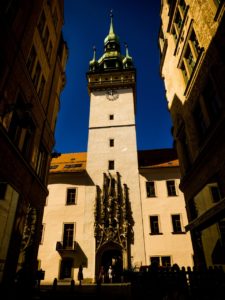
In the autumn of 1333 it was probably the Bohemian lords, headed by Jan Volek, Vyšehrad provost and chancellor and illegitimate son of King Wenceslas II, who persuaded the young Charles to remain in the kingdom and care for its administration and the public good (publicum bonum). King John had no choice but to put up with this situation and award Charles the title of Moravian Margrave. The seventeen-year-old prince immediately put himself into the restoration of the sovereign power in both lands – Bohemia and Moravia. He had not visited Brno until August 1334; however, no details of his stay are known. As part of restitution activities, Charles at the beginning of his reign took care to redeem the Olomouc, Brno and Znojmo castles and some other sovereign fortresses pledged to various noblemen. In the ensuing years, Charles defended the interests of his brother John Henry, who the Habsburgs were denying a part of the heritage left by Henry Carinthian.
Ultimately, John of Luxembourg, also on behalf of his son and his wife, gave up Carinthia, while the Habsburgs acknowledged their dominance in Tyrol. Charles did not agree with this, and John’s actions became one of the causes of a split between the father and the son. Charles’ wife Blanche of Valois even had to leave Prague in the autumn of 1337. She found refuge in Brno, undoubtedly at Špilberk castle.
Several clerics who were to serve Charles came from the Brno environment (Chancellor Nicholas from Brno, later bishop of Trent, and Nicholas Luckův, later chancellor and dean of the Olomouc Chapter). The Margrave however was often in Bohemia or abroad, and thus effective management was exercised by the State Governors drawn from among the members of the most important noble families.
Brno at that time did not enjoy any special favour from the young Margrave; only in 1340 did he confirm the existing privileges submitted to him at Špilberk by the mayor and city councillors. The city represented a part of Charles’ economic base. He received a special annual levy, which he often forwarded either to his creditors or as a courtesy gift to various recipients. An Austrian gentleman from Hagenberg is said to have received directly from the city in 1344 two hundred talents of silver for arranging the marriage of Charles’ daughter with the Austrian heir. When Charles returned from Prussia in 1337, he ordered the city to pay three hundred talents to a former chamberlain William of Landstein. In the years 1346 – 1348 Smil Bítovský of Lichtenburg obtained two hundred talents from the municipal collection, and the Hungarian King was designated an annual pay of three hundred and fifty talents from the same source.
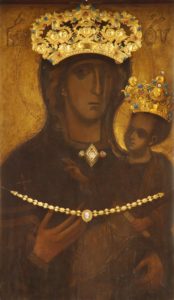
This was a considerable burden for the city, which Charles to some extent compensated for by enabling the citizens of Brno to keep one hundred ‘kopa’ [a ‘kopa’ was three-score groschen], which were handed to the margravial chamber by Jews. This probably led also to the reaffirmation of the city’s privileges in 1348 and the granting of new economic privileges in the same year. In extraordinary times, the city had to provide some amounts from the urban levy during Charles’ visits, when Margrave was often accompanied by distinguished guests. At the end of 1343 he was accompanied by the Count of Holland and the city had to contribute three hundred and thirty talents from the levy; a year later he came with an even nobler entourage – apart from King John of Bohemia, there were also Hungarian King Louis and the Prague Archbishop Arnost.
In May 1348, less than a year after the Czech royal coronation, Charles travelled to have negotiations with the Austrian Duke, and in the context of this journey he was ceremonially received in Brno and Znojmo, and perhaps earlier also in Jihlava. The city of Brno spent exactly two hundred and thirty-two talents on this welcome, which amounted to a little more than a quarter of its total annual revenue.
According to the testament of John of Luxembourg, Charles’ brother John Henry, who managed to get divorced from Margaret Tyrol in the summer of 1349, was supposed to gain Moravia after his death. Charles himself had resolved the constitutional position of Moravia already on 7 April 1348, when he ruled that the Moravian Margraviate along with the Bishopric of Olomouc and the Opava Duchy should be given as a fiefdom to the King of Bohemia. At the end of 1349, Charles gave his brother the margraviate as a fiefdom and set off with him to Moravia, to Brno. At the provincial court, John Henry received tribute from the Moravian lords; in attendance were also representatives of the city. With this however, a stage in the reign of Charles IV in the city and throughout country ended. The Margravial court of his brother was supposed to be in Brno in the future.
Already in 1350, the new Margrave founded a monastery of the Augustinian hermits with the church of Virgin Mary and St. Thomas before the city’s walls. According to a later but trustworthy story, Charles IV donated for this new foundation a Byzantine–Italian icon of the Mother of God Hodegetria, which was later also called the Thaumaturga (Miraculous) or Gemma or Palladium of Moravia. In 1356, Charles IV reportedly attended the consecration of the chancel of the monastery church and perhaps on that occasion donated the panel painting from the late 12th or early 13th century (according to another version, the Margrave acquired the picture from Charles and he in turn handed it to the monastery).
Charles IV never showed any particular favour to Brno, as opposed for example to his grandfather Wenceslas II. Even the security situation was far from ideal in the 1340s: Brno’s people were assaulted and robbed several times on trade routes, once even in the immediate vicinity of the city. The importance of Brno, however, grew at this time, and the following years confirmed this trend.
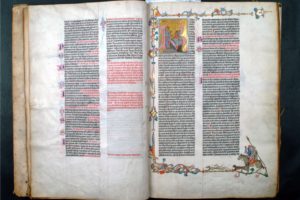
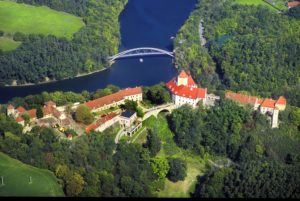



 Čeština
Čeština